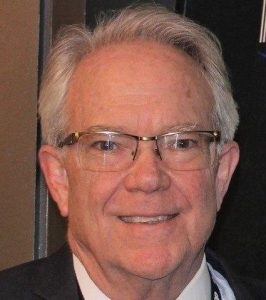After years of wishing for an “Amazon-like” experience for citizens dealing with government services, the hard-won lessons of the coronavirus pandemic are spurring state and local governments toward necessary improvements in digital service delivery to get closer to that goal.
At few places is that more evident than at the California Department of Motor Vehicles (DMV), state officials explained at Government Technology’s Feb. 8 Accelerating Digital Innovation at the Speed of Constituents webinar.
My old friend Teri Takai, who has served as state CIO in both California and Michigan, along with a stint as CIO at the U.S. Department of Defense, moderated the panel, which featured Ajay Gupta, Chief Digital Transformation Officer and CIO at the California DMV.
The big question before the panel was how state and local governments can embrace and accelerate digital innovation to reimagine their traditional IT operating model and deliver superior value to constituents. An important corollary to that question is whether government can offer services and experiences as efficiently as possible and move at the speed of their constituents.
These used to be tough questions for the California DMV, where, for instance, credit cards were not accepted until the governor demanded it just two years ago. Another example: California was the last state still non-compliant with Federal REAL ID mandates, with huge crowds overwhelming field offices across the state. A Federal deus ex machina waiver due to the pandemic postponed California’s REAL ID deadline, but not the forced retirement of the DMV director.
Former California CIO Takai knows that probably no state government agency faces more legislative and citizen scrutiny than the state’s DMV.
Gupta, CIO at the DMV concurred. “In terms of the number of DMV offices – almost 180 throughout California – we are the largest pick and click organized entity in the state. So yes, it comes with a lot of scrutiny. We are the face of the state.”
The DMV also plays a significant fiscal role in state government, collecting over $12 billion in revenue annually. “When COVID hit us, we got lucky somewhat timing-wise, and we used that crisis as an opportunity to really accelerate our own digital transformation and innovation agenda,” Gupta said.
Moving on from Legacy
Any discussion of improving digital services must address the challenge of managing legacy technologies, replacing them, or building new front end solutions, or both, and Gupta explained DMV’s approach. “It was not feasible to modify a 40-year-old technology that was still working solidly well, but just not very nimble. We were already looking at technologies that would work around the limitations of legacy to serve our customers,” Gupta said.
The department turned to a mix of options including robotic process automation, machine learning, AI, web accelerators, remote identity proofing, data virtualization, virtual assistants, cloud-native technologies, and a federated identity solution. “That was all the fun stuff, for technologies to really serve our customers in need.”
At the same time, the pandemic forced the closure of field offices, and very few, if any, appointments were allowed. However, DMV still issued millions of transactions during the pandemic, and set up a virtual field office within a matter of two weeks.
“For other services and channels, we have expanded our contact center, whether it’s augmented with our web channel or combining and working together, we have created this notion of contactless REAL ID issuance,” Gupta said.
The department also is working with AAA so citizens can go there rather than the DMV. To avoid crowds, DMV uses workforce scheduling optimization, so the department knows when the most traffic is going to hit the field offices, and manages it appropriately in terms of staff availability and crowd management.
“These are some of the things that we have really learned and carried over. And we’ll continue to move forward doing our digital transformation for the DMV for the state,” Gupta said.
Improvements Pipeline
Takai looked for hints on DMV’s future moves, asking Gupta, “What are some of the things that aren’t implemented yet, or that you’re thinking about in terms of continuing to improve the customer service?”
“Our focus is creating this nimble delivery model at the DMV where we equip all our service channels with all the tools needed by both the online people or the in-person customer,” Gupta replied.
That model includes adding additional online services and more assisted channels so DMV has a chat bots running, but also has live chat agents available to serve customers. There is real time language translation available as well that are “offered in 13 different languages at this point in time, creating this ‘augmented voice to digital journey’ where you will start your journey maybe on the phone, finish it on the web, or on your mobile device,” he said.
The DMV has also created a new ecosystem for field agents’ use, Gupta said. It is a completely portable kit with a very low profile which fits in a small suitcase, and is equipped with a tablet device where it can take a biometric signature and print out the customer’s registration card and other documents.
Another future digital services initiative will be a mobile driver license, “So you don’t necessarily have the need to carry a physical driver license anymore,” Gupta said. “We’ll be providing your license available on your phone, which most people already use for many other applications.”
“We’re building this and other options for our customers, creating this whole virtual ecosystem where customers can serve themselves, or be serviced virtually, and also in person,” he said. “So that’s some of the pieces of the journey that we are taking on right now.”
Not your grandfather’s DMV. Or even your father’s, huh?

